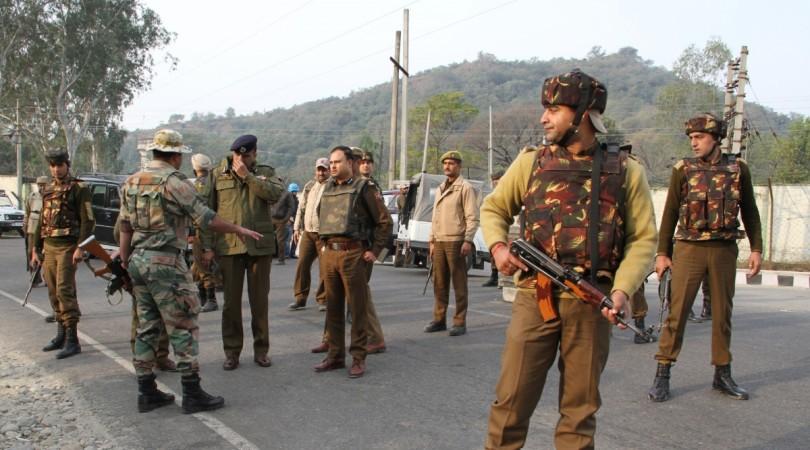
Intelligence agencies had warned of an imminent attack on a high-value military target just 10 days before the terror attack on the 16 Corps headquarters in Nagrota claimed the lives of seven army personnel -- two officers and five soldiers.
Intelligence agencies had been keeping an eye on a Lashkar-e-Taiba (LeT) cell in Kashmir that had been planning to attack the Nagrota headquarters since two weeks, the Indian Express quoted highly placed government sources as saying.
While that particular LeT cell did not carry out the Tuesday attack, officials told the daily that the warning raises questions on how the attackers succeeded in entering Nagrota and the kind of security measures that had been taken at sensitive installations.
According to military sources, the terrorists entered the army headquarters by scaling its perimeters from the rear, following which they moved towards the buildings that are home to officers and their families. The first firing killed an officer and three other soldiers.
Efforts to rescue over a dozen soldiers, two women and at least two children trapped inside the mess where the terrorists were hiding killed another officer and two soldiers. The names of all the deceased personnel were released by the army late Tuesday evening.
Though the Northern Command of the Indian Army did not say anything on how the attackers entered the premises, officials confirmed that three terrorists had been killed in the Nagrota attack -- the biggest strike on an army unit since the Uri attacks of September 18 this year. Another infiltration bid was also foiled by the army in Chamliyal in the Samba sector killing three terrorists and injuring four BSF jawans.

Three AK-47s, 457 AK bullets, 12 grenades and 20 magazines were among the items recovered by the army.
A top military officer told the daily that the terrorists were familiar with the layout of the Nagrota headquarters and the vulnerabilities of the perimeter adding that they might have collected information from civilians who have access to the premises.
"This is something that will have to be investigated, but it does seem probable, given how the attack played out," the officer said.
No national audit or review of security measures at defence installations across India have taken place following the January attack on the Pathankot airbase where terrorists entered by simply jumping over the wall of the premises. According to reports, the terrorists spent half the night and an entire day inside an storage area of the airbase suggesting that they had intelligence on the airbase.
"There are hundreds of bases and facilities which lack even closed-circuit camera coverage, let alone sensors and other equipment," a senior official of the Ministry of Defence told the IE.
The National Investigation Agency (NIA) has not been able to identify any suspect yet. "Thousands of people had access to the base with no proper screening," an investigator said.
According to a senior military officer, the terrorists suspected to belong to the LeT might have infiltrated into the Indian territory by crossing the Line of Control (LoC) in the Sundarbani sector where intense firing between Indian and Pakistani troops had taken place, or the International Border (IB) in Samba cut across by streams overgrown with elephant grass, the IE reported.
"It's been relatively easy for terrorists to infiltrate because of the firing. The clashes make it that much harder to conduct patrols close to the Line of Control," a security official said.








